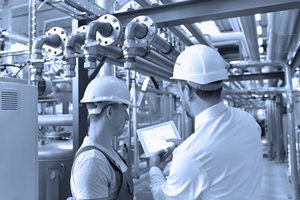Hybrids have always formed an integral part of myths, legend and speculation. In Greek mythology fantastic creatures are typically depicted as hybrids, such as the Minotaur and the Centaur. Even in an Industrial Internet of Things (IIoT) context, there’s still something mysterious about hybrid. Here, Johan Jonzon, CMO and co-founder of stream analytics and hybrid integration platform, Crosser, breaks down what hybrid really means and why it will be crucial for factories of the future.
The opinion of what hybrid integration involves has changed over time, and is continuing to do so. Gartner defines it as the ability to connect applications, data, files and business partners across cloud and on-premise systems. However, hybrid isn’t constrained to just two things. The complete concept is far broader in today’s landscape addressing integration across different domains, endpoints and deployment models.
The real definition
In the world of enterprise integration, hybrid does not refer to two elements as the definition states, but up to four different ones. In fact, the phrase hybrid integration platform (HIP) was initially developed by Gartner and describes four dimensions of “different elements”. These are deployment models, integration models, endpoints including IoT machines and stakeholders, such as citizen integrators.
A HIP provides organisations with the tools they need to simplify data and application integration across any deployment model. With silos broken down, businesses can turn data into actionable insights, allowing them to make decisions faster. As a result, Gartner estimates that by the end of 2022, 65% of global organisations will have implemented a hybrid integration platform.
A hybrid industry
Already a complex task, digital transformation is becoming more challenging with increased demand for mobile connectivity and IoT devices with an estimated 12 million IoT devices thought to already exist.
Consequentially, the demand for new integrations has surpassed the capacity most enterprises can handle. Companies often choose the cloud for its unlimited scalability as an answer to these challenges. But this strategy doesn’t account for inflexible legacy systems, which are often critical to the many facilities that still rely on them.
Digitalisation efforts now require integration tools that can address this level of complexity. Modern enterprises cannot justify sending everything to the cloud, so instead need a solution that streamlines processes, disperses skill sets over a wider range of people, restructures their integration architecture, while using new technologies to make integration simpler and more efficient. Here, hybrid integration platforms offer relief.
The main value of hybrid integration is that it combines vertical and horizontal integrations to address all areas of a facility. Vertical integration works beyond traditional production hierarchy levels from the sensor to the business level of the company allowing data to be used for business decisions. While horizontal integration ensures networking between machines, IoT devices and engineering processes, including cloud to cloud, to work together seamlessly.
An intelligent future
But it doesn’t stop there. Enterprises must be future-thinking and strive for an integration platform that is also intelligent. Firstly, integration platforms of the future must enable intelligent workflows between systems that can analyse and act on advanced conditions, including artificial intelligence (AI) and machine learning (ML). They also need to be edge-enabled to allow for developing IoT data from connected devices, which benefit from local, intelligent processing, at the edge, close to the data origin.
Ensuring the platform is event-driven is also crucial because it provides enterprises with the opportunity to act instantly on data that is new, streaming or changed. Lastly, an intelligent platform must bridge the gap between the physical world and IT infrastructure, enabling integrations to run at production sites, in the supply chain and between offices.
The Crosser hybrid integration platform was built for the enterprises of tomorrow, anticipating that true digitalisation will not revolve around choosing between the edge, cloud or on-premise. It will involve using all three. It’s this ability to combine all three levels that makes Crosser’s HIP. It’s designed to make it easier to monitor and maintain data flows using a centralised platform eliminating the need for additional systems to compensate for different areas of data flow deployment.
The term hybrid has been shrouded in mystery, with its meaning left unclear. It’s not about blending two assets as mythology dictates, but involves using multiple layers to run integrations everywhere in a facility. To truly realise seamless digital transformation, integration platforms must encompass intelligent modelling, enable edge processing of IoT devices and bridge the gap between data stored across several locations.
The author is Johan Jonzon, CMO and co-founder of stream analytics and hybrid integration platform, Crosser.
Comment on this article below or via Twitter: @IoTNow_OR @jcIoTnow










